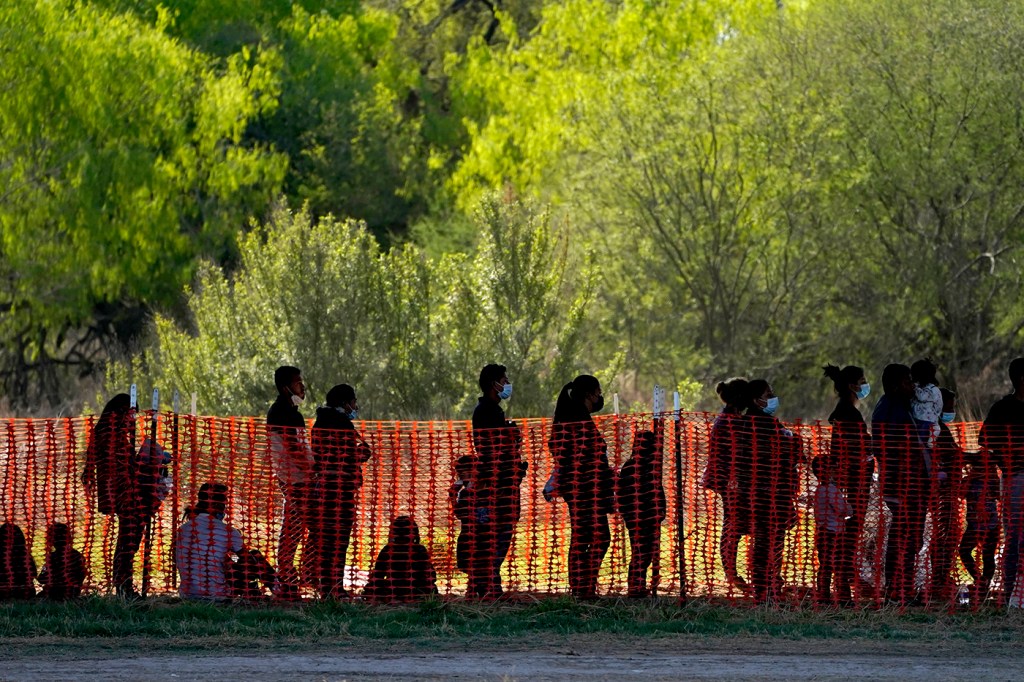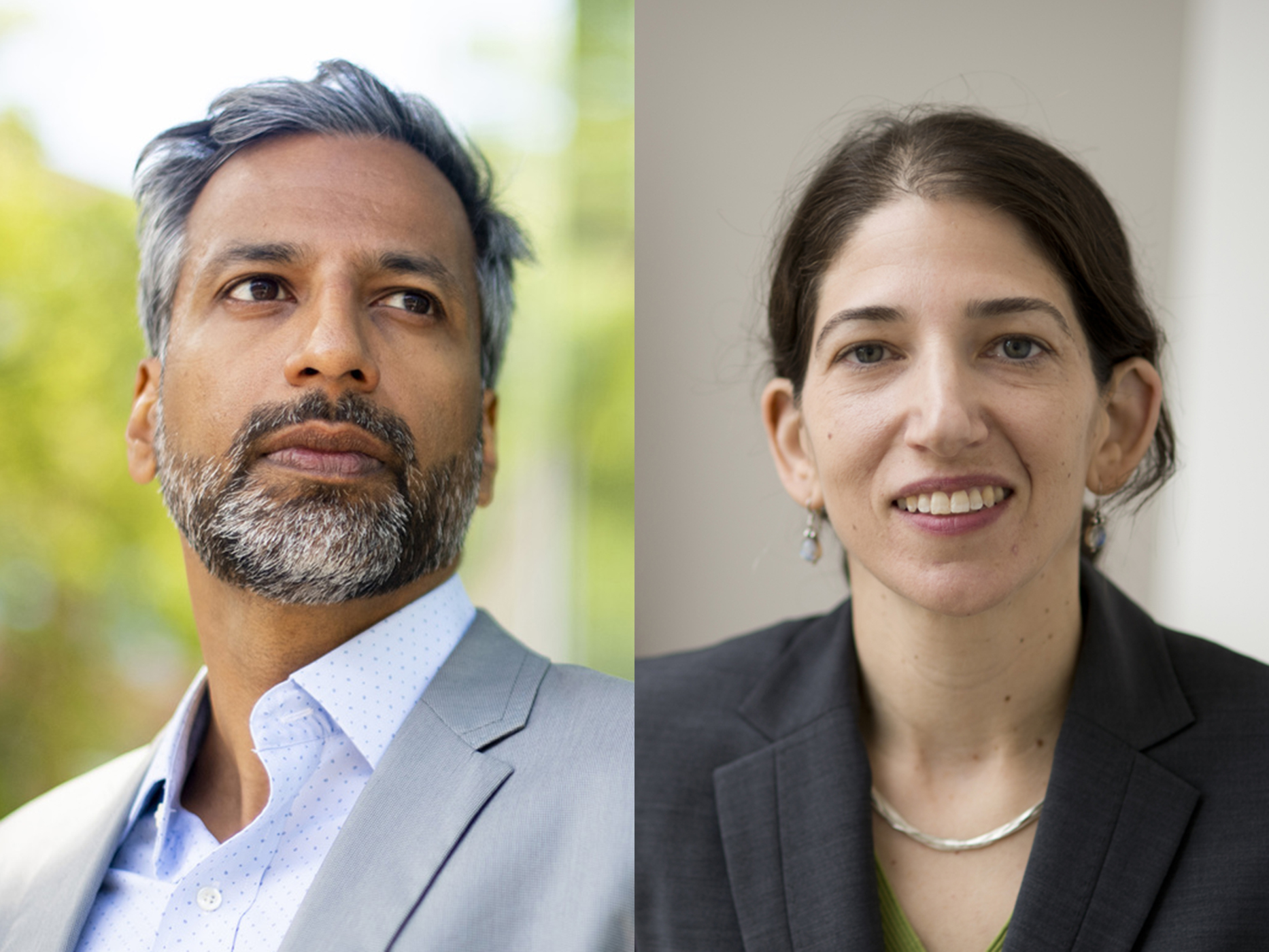The border conundrum: Solutions call for new policies to an ‘ongoing crisis’

President Joe Biden is confronting a challenging and complex situation along the Mexican border that will require political will and major policy changes to address, Northeastern’s immigration law experts say.
The latest migrant numbers are unlike anything seen in recent memory, U.S. authorities say. “We are on pace to encounter more individuals on the southwest border than we have in the last 20 years,” Homeland Security Secretary Alejandro Mayorkas said in a statement.
But whether it amounts to a new crisis is open to interpretation, explains Hemanth Gundavaram, who teaches immigration law and is the co-founder and director of Northeastern’s Immigrant Justice Clinic.
“It is an ongoing crisis like people dying from gun violence or in our health-care system,” he says.

Left, Hemanth Gundavaram, who teaches immigration law and is the co-founder and director of Northeastern’s Immigrant Justice Clinic. Photo by Ruby Wallau/Northeastern University. Right, Rachel Rosenbloom, a Northeastern immigration law professor. Northeastern file photo.
Gundavaram and fellow immigration law professor Rachel Rosenbloom are among the speakers who will examine the future of U.S. immigration policy at the southern border at a March 31 panel discussion sponsored by Northeastern’s law school. The event is free and open to the public.
Immigration has long vexed presidents from both parties. Biden told reporters last week that the latest exodus is nothing new. He says large groups of Central Americans and Mexicans routinely make the journey during the cooler months to avoid the desert heat. Most are fleeing poor economic conditions, gang violence, and natural disasters.
The last major overhaul of U.S. immigration law in 1996 took away the rights of migrants at the border to go before an immigration judge, and created new fast-track deportation processes that prevent many asylum-seekers from ever having a hearing, says Rosenbloom.

Left, Wendy Parmet, the Matthews distinguished university professor of law. Northeastern University file photo. Right, Dan Kennedy, a Northeastern journalism professor.
Tangible progress was being made in the late 1990s on right-sizing some of the more rigid aspects of the 1996 law, “and then September 11 happened and it just all disappeared,” she says of the headway. “All we saw was more enforcement.”
The situation has spiraled quickly into a political stick fight, with Democrats and Republicans pointing fingers over who’s to blame. Biden said former President Donald Trump pulled the plug on a $700 million bipartisan plan that he worked on as vice president. Biden accused his predecessor of dismantling other key immigration components.
“What we’re doing now is attempting to rebuild the system,” the president said.
But “Trump’s got nothing to do with this,” Republican Senator Lindsey Graham of South Carolina countered at a press briefing. “This is not Trump’s fault.”
Biden has largely reversed some of Trump’s immigration moves unilaterally through executive orders, but he has retained, except for unaccompanied minors, a key Trump pandemic-era health law known as Title 42.
The Centers for Disease Control and Prevention policy lets Border Patrol agents remove undocumented migrants from the country to prevent the spread of the coronavirus in holding facilities. The policy began in March 2020 at the outset of the COVID-19 pandemic.
But Wendy Parmet, the Matthews distinguished university professor of law at Northeastern, points out that unmasked migrants are living in overcrowded conditions south of the border where social distancing is impossible, increasing the risk of virus transmission similar to what happened in prisons and jails.
“The problem isn’t that the asylum-seekers are dangerous, the problem is that everybody is potentially dangerous until the virus is quelled and more people are vaccinated,” explains Parmet, who serves as the director of the Center for Health Policy and Law.
She was not immediately sure if unaccompanied minors who are being detained in the U.S. were being inoculated from COVID-19, but historically there have been flu vaccination problems in the detention camps at the border where asylum-seekers are kept until they are processed.
“So there are complexities with logistics and I don’t know that the vaccine will magically cure the problem of a short-term outbreak in the detention facilities,” Parmet says.
The Biden administration expects border crossings by unaccompanied children will rise sharply for at least the next two months, according to media reports. Between 18,600 and 22,000 children could cross the border in April. For May, the figure could rise to between 21,800 and 25,000. That compares to 9,300 in February and 5,700 in January.
Northeastern’s Rosenbloom says that when these minors are apprehended at the border, the process for releasing them can take some time because U.S. law requires that they be placed with someone to take care of them, often a relative. They are not released on their own.
“When the number of unaccompanied children goes up, the asylum process slows down,” says Rosenbloom. “It is a challenging issue right now.”
One of the reasons that there are so many minors traveling by themselves is that their parents are being kept out under Title 42, Rosenbloom adds. Biden should end the Title 42 expulsions and allow everyone, including adults, to seek asylum, she recommends.
“That’s what’s required under international law, and it would also result in fewer unaccompanied children at the border,” she says.
Rosenbloom cites the mass emigration of thousands of Cubans in the 1980s, known as the Mariel boatlift, as proof that the United States could handle large immigrant populations. “We are totally capable of dealing with this situation,” she says.
But the problem doesn’t lie solely at the border. Immigration courts around the country are swamped with cases and lack enough judges to hear them, explains Gundavara, who came to the United States from India as a child.
“When I ask students how many immigration judges Boston has, they think ‘maybe 50?’” he says. “Boston has 12 immigration judges that cover all the cases in Massachusetts, Maine, New Hampshire, Vermont, and Rhode Island.” Asylum offices are backed up too. Gundavaram says he has asylum cases dating back to 2017.
Nationally, there is a backlog of 1.3 million immigration cases, according to an online tracking site. Most of those are nationals from Mexico, El Salvador, Guatemala, and Honduras. Washington is in diplomatic talks with those nations’ leaders to determine the root causes of migration as part of a $4 billion regional strategy, according to a White House press briefing by Roberta Jacobson, former U.S. ambassador to Mexico.
While Biden has pledged a transparent administration, he has refused so far to let reporters or photographers into the migrant detention facilities. Dan Kennedy, a Northeastern journalism professor, says every president wants to control the narrative and shape it in a way that makes him look good.
“It’s very important to the Biden administration that it tells a consistent narrative that it has brought a more humane policy to bear on the problem of undocumented immigration at the border,” he says. “Pictures and visuals tend to overwhelm everything else and that’s what they’re trying to avoid.”
For media inquiries, please contact media@northeastern.edu.





